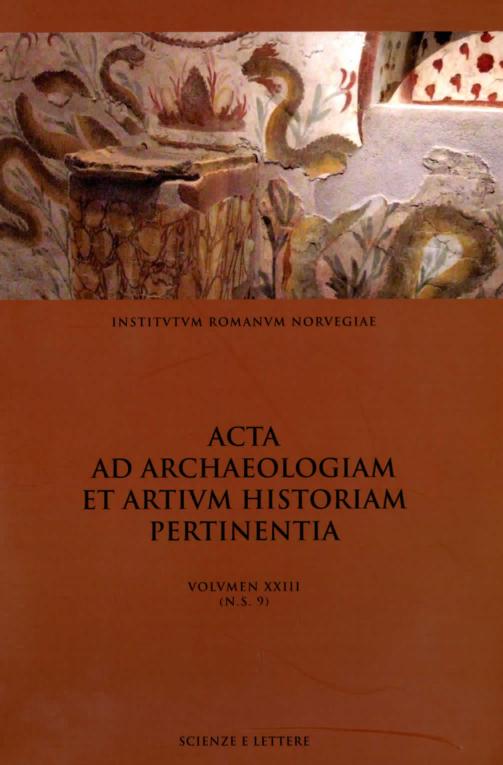Imperial Mausolea and Everyman’s Grave? The fourth-century funerary Basilicas in the Roman suburbia.
DOI:
https://doi.org/10.5617/acta.5771Abstract
When Constantine had conquered Rome from Maxentius, he constructed a series of U-shaped funerary basilicas outside Rome. All lie beside one of the main roads leading into the city, near a catacomb where one or more saints already seem to have been venerated. With one possible exception (the basilica of the Via Ardeatina, which has not been completely excavated), a mausoleum for one or more members of the Imperial family was constructed or at least planned adjacent to the basilica. This is a novelty since Constantine’s predecessors generally built one large mausoleum close to one of the consular roads. By spreading the Imperial mausolea and placing them close to the existing centres of Christian worship, Constantine ensured that his family and his new faith were constantly commemorated, not only by the persons who came to visit the tombs in the adjacent funerary basilicas but also by the many pilgrims who came to honour the saint(s) buried in the nearby catacomb.How to Cite
Sande, S. (2017) “Imperial Mausolea and Everyman’s Grave? The fourth-century funerary Basilicas in the Roman suburbia”., Acta ad archaeologiam et artium historiam pertinentia, 23(9 N.S.), pp. 171–194. doi: 10.5617/acta.5771.
Issue
Section
Articles
License

This work is licensed under a Creative Commons Attribution-NonCommercial 4.0 International License.
Authors who publish with this journal agree to the following terms:
- Authors retain copyright and grant the journal right of first publication with the work simultaneously licensed under a Creative Commons Attribution License that allows others to share the work with an acknowledgment of the work's authorship and initial publication in this journal.
- Authors are able to enter into separate, additional contractual arrangements for the non-exclusive distribution of the journal's published version of the work (e.g., post it to an institutional repository or publish it in a book), with an acknowledgement of its initial publication in this journal.
- Authors are permitted and encouraged to post their work online (e.g., in institutional repositories or on their website) prior to and during the submission process, as it can lead to productive exchanges, as well as earlier and greater citation of published work (See The Effect of Open Access).





